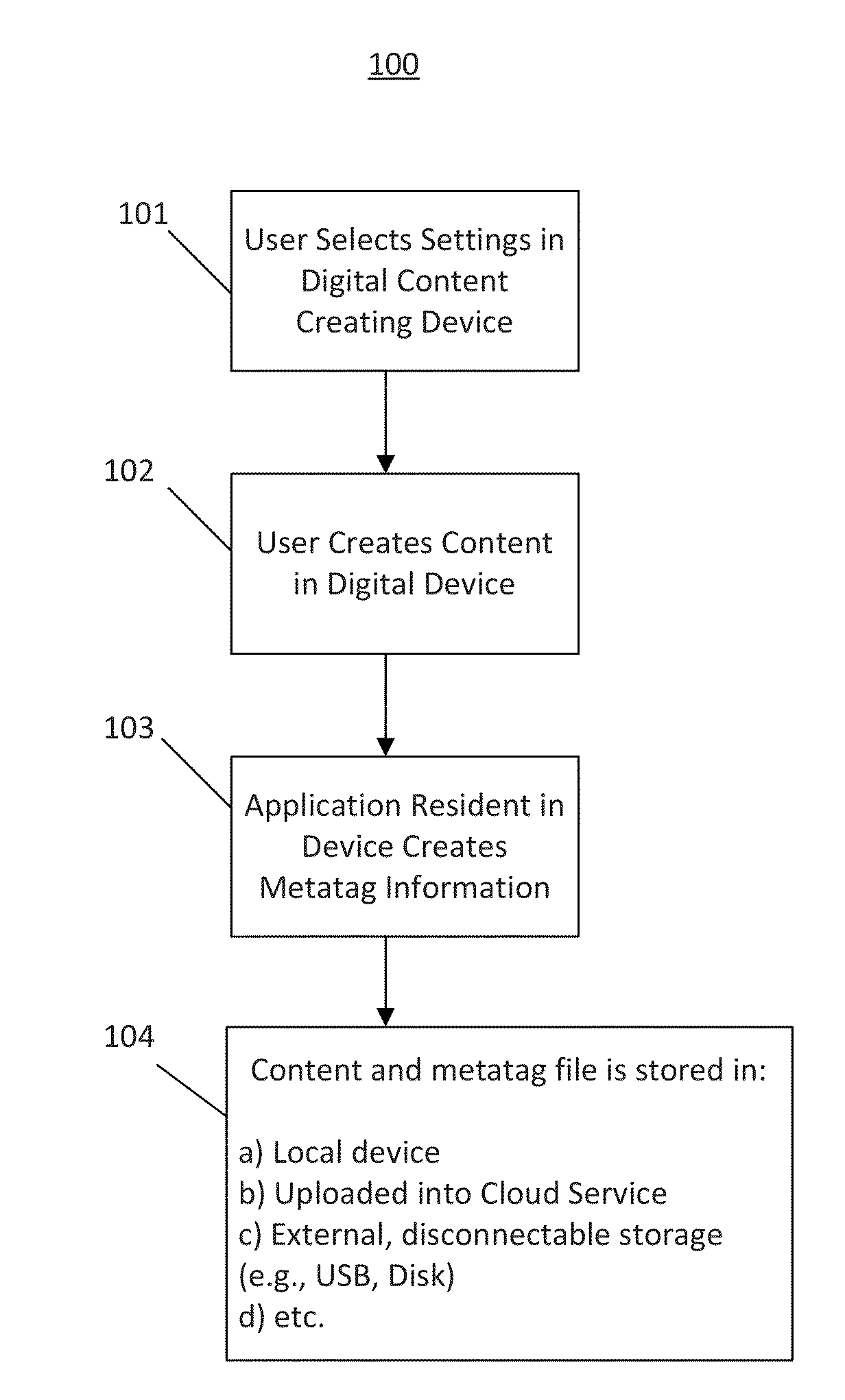Systems and methods for adding descriptive metadata to digital content
a technology of descriptive metadata and digital content, applied in the field of metadata, can solve the problems of inability to add descriptive metadata in bulk, inefficient generation and association of descriptive metadata with created content, time-consuming and other burdensome, and conventional applications are not conducive to the moment-to-moment addition of metadata
- Summary
- Abstract
- Description
- Claims
- Application Information
AI Technical Summary
Benefits of technology
Problems solved by technology
Method used
Image
Examples
Embodiment Construction
[0045]In an embodiment, systems and methods are disclosed for adding descriptive metadata to content items, for example, to organize and facilitate searches for the content items once they are stored. As used herein, the terms “content,”“content item,” or “content items” may refer to any type of content, including, without limitation, images (e.g., photographs, collages, digital artwork, etc.), video recordings, audio recordings, animations, slideshows, electronic documents (e.g., spreadsheets, word-processing documents, PDF documents, etc.), etc. In embodiments, the addition of the descriptive metadata may be performed automatically or semi-automatically by a computing device, such as a smart phone, tablet, laptop, desktop, server, or other processing device.
[0046]After reading this description, it will become apparent to one skilled in the art how to implement the invention in various alternative embodiments and alternative applications. However, although various embodiments of th...
PUM
 Login to View More
Login to View More Abstract
Description
Claims
Application Information
 Login to View More
Login to View More - R&D
- Intellectual Property
- Life Sciences
- Materials
- Tech Scout
- Unparalleled Data Quality
- Higher Quality Content
- 60% Fewer Hallucinations
Browse by: Latest US Patents, China's latest patents, Technical Efficacy Thesaurus, Application Domain, Technology Topic, Popular Technical Reports.
© 2025 PatSnap. All rights reserved.Legal|Privacy policy|Modern Slavery Act Transparency Statement|Sitemap|About US| Contact US: help@patsnap.com



